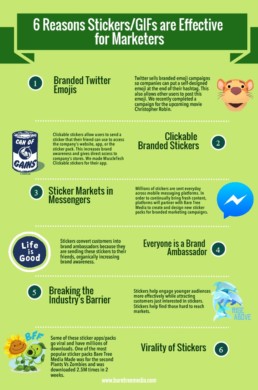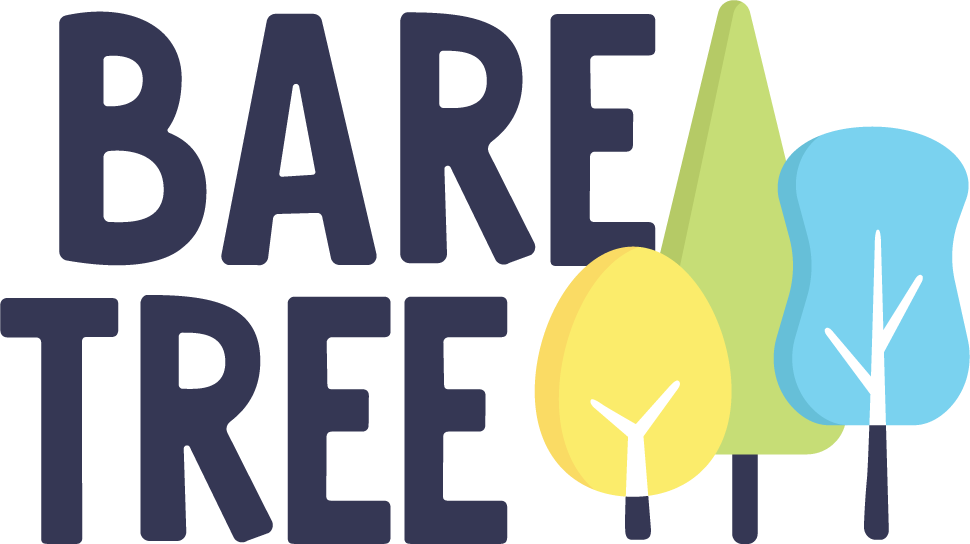We Can GIF It
Be A Trendsetter, not a Follower
Keeping up with the trends in today's society is the priority for brands who adhere to the schema of remaining relevant. They need to understand what conversations their consumers are having, what’s important to them, and prove that they are also a part of this conversation.
What if I told you that’s the wrong approach to take?

Brands need to start the trend, not catch up to it. Trying to appeal to an audience using memes won't win you any brownie points with consumers—it’s too transparent for the hyper-jaded consumer of today and rings so hollow it may actually push your audience away. They are too aware of the 'corporate' image, and view the attempt like an adult trying, embarrassingly, to relate to youth using what they perceive as 'the new culture' but in inexperienced, and incorrect, ways.

For brands who want to proactively expand their audience, the solution is a little different: to insert themselves into their consumer’s popular culture and become the medium through which the conversation is had in the first place. And in 2018, the form of discourse is memes, and specifically memes through GIFs.

There is one clear champion of GIFs: you might have heard of them, but in case you haven’t it’s a huge meme depository called GIPHY. It’s a free, online platform that lets users upload their GIF content and access this content through a whole host of platforms including: Facebook Messenger, Instagram, (and most recently, Instagram DMs), Snapchat, Twitter, Viber, Slack, Discord, Outlook, and seriously, there’s MORE.
What does this mean? It means that putting your content on GIPHY makes your content as ubiquitous as GIFs have become across the internet. Given that, it’s amazing that it’s remained fairly underutilized by brands has a whole.
The Way Forward
Maintaining a GIPHY channel is great for brands who have high or low recognition alike. After creating the GIF content, they just need to be uploaded and tagged appropriately. From there, the tags will do all the work and users will find and spread the GIFs (literally) everywhere. It’s free marketing, but more than that, it’s the creation of a culture around the brand.
If brands are worried about maintaining the channel themselves, or are unsure about how to go about optimizing search results, fear not! There are companies who will help you create and manage your GIPHY channel (like us!) Although it will come at a price, the recognition that stands to be gained and the opportunity to insert your brand into the cultural lexicon is worth the hassle.
In fact, in this sense GIPHY can be even more advantageous to brands who aren’t well known. What better way to build your brand than by letting it expand organically through conversations that consumers are having? You can tailor the image you want by the content you upload and then wait to see how your consumers use the content you’ve created.
So while other brands struggle to remain a part of the conversation, those brands on the social beat will recognize the importance of being a part of the language spoken.

Six Reasons Stickers & GIFs are Effective for Marketing
Marketing is constantly evolving around the consumer, and during the Age of Technology it’s evolving at a more rapid pace ever; it can be difficult for marketers to know whether or not they’re on the uptake or being left behind. Perhaps the most underrated game-changing tool for marketers are animated stickers and GIFs. Although many still use video, this format is frankly out of date for the modern internet user. According to a survey conducted by Harris Poll, a whopping 71% of Americans would rather send a digital sticker over a block of text. With such a large user base, it’s no surprise more and more companies have been seizing the opportunity to make branded stickers and GIFs to seamlessly integrate their brand into their consumer’s daily life. We partner with these companies to make their brand come alive within mobile conversations. However, not all companies are aware of the wide gamut of opportunities afforded to them across platforms or the sheer flexibility stickers and GIFs inherently have.
1. Custom Twitter Emojis that create trending hashtags:
Companies can pay Twitter to attach a custom emoji to a Twitter hashtag for a period of time. Then, whenever someone uses their hashtag the emoji automatically comes with it! The brand’s hashtag instantly stands out with its unique emoji and helps create a community around the product.
Recently, we collaborated with Disney on a campaign for Christopher Robin and other upcoming titles, including creating a range of twitter emojis to promote the film and make the hashtags appealing, relevant, and most importantly create the cute Pooh-bear association to the Christopher Robin movie in people’s minds. We managed the storyboarding, sketching, and illustration for these emojis.
2. Clickable Branded Stickers:
A branded sticker campaign’s main objective is to organically increase brand awareness and engagement. To that end, stickers are a revolutionary tool because it enables marketers to have their brand present in their customers everyday conversations across mobile. In other words, their brand becomes a permanent part of their customer’s life.
A good example of this is Lovate Health’s MuscleTech stickers, promoting their MuscleTech brand of products. These stickers are centered around and cater directly to the consumer base that uses MuscleTech products; as a result, they end up using them a lot because the sentiments and in-jokes are relevant to them. This entrenches MuscleTech further into the community in a feedback loop that keeps both the company and the consumer happy, and helps new initiates to the community naturally find their product in a sea of competitors.
Lovate Health has taken it even further by making their stickers clickable. These stickers, when sent, allow the receiver or sender to click the sticker and be redirected to a website, the app, or the app store. This is brilliant because users are able to interact with the images being received and has quick access to the company’s brand. They also allow people to send links to products they enjoy in a fun way!
3. Sticker Markets on Messengers:
Stickers and messengers go hand-in-hand, creating a demand for sticker marketplaces, which offer a wide variety of branded emojis and keyboard and almost functions as an advertising playground.
In 2016, around 50% of all mobile users used at least one form of mobile messenger, according to Stastia. The fact that since then, messenger apps continue to add free features like video calls, encryption and social media means that usage has only been increasing. Sticker marketplaces have also grown in kind, and many of mobile messengers have created their own sticker markets that draw users to their specific platform.
Apple and Facebook are leaders in this industry with their respective iMessage and Messenger platforms; in total, over 1 billion stickers sent on them. We’ve has observed the intense popularity of stickers it created for the mobile game Plants Vs. Zombies, which had 1 million downloads 4 days, and 2.5 million downloads in a week with over 100 million impressions.
4. Everyone is a Brand Ambassador:
This was touched upon briefly in point number two, but one of a branded sticker’s major selling points is the seamless integration into a consumer’s life: in other words, converting that customer into a brand ambassador.
This is one of the most effective ways of creating brand ambassadors because people are sending these stickers to their friends organically; they love the content and they are spreading the brand to all of their friends in a win-win scenario. Furthermore, people who are friends tend to be in similar target markets, which means having stickers so your customers can share your brand with their friends is the ideal way to spread your brand.
5. They Can Reach New Audiences
Stickers are an important bridge that connects companies to a younger audience in a charmingly appealing way. In an age where this younger audience has been collectively groomed to ignore the millions of ads they see every day, stickers appeal as authentic and fun, leading more of this audience to be attracted to and spread your brand (in the form of stickers). Sometimes you even get people who were previously unaware of your brand but will buy sticker packs because of artistic appeal or funny witticisms, which could convert them into customers. If not, they’ll at the very least be creating more brand awareness for your brand.
6. They Have Potential for Going Viral
Some of these sticker apps/packs go viral and have millions of downloads. Although not a guarantee, the possibility is always there and because stickers are created to be spread on the internet, where the phenomenon of “going viral” first appeared and retains the farthest reach, it is a direct line to the culture that facilities going viral.
Overall, the existence of stickers as a marketing tool has opened a completely new avenue for brands and consumers to communicate through. Instead of having their message get “lost in textlation”, customers can augment their thoughts with your brand, without losing what they want to say.
Most importantly, they can do it in a way that feels fun and cool and makes them feel good, which will push them to keep doing it. People can show who they are by sending stickers of TV shows, music, or quotes they like from pop culture that curate their personality by showcasing the communities they’re a part of and appealing to others like them. In layman’s terms, stickers/GIFs are great for showing some personality!


